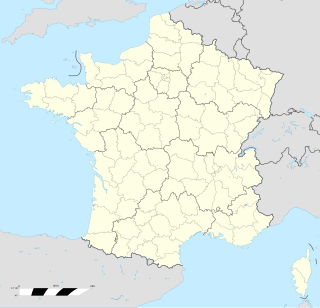Sienna is an earth pigment containing iron oxide and manganese oxide. In its natural state, it is yellow-brown and is called raw sienna. When heated, it becomes a reddish brown and is called burnt sienna. It takes its name from the city-state of Siena, where it was produced during the Renaissance. Along with ochre and umber, it was one of the first pigments to be used by humans, and is found in many cave paintings. Since the Renaissance, it has been one of the brown pigments most widely used by artists.

The Black Friday bushfires of 13 January 1939, in Victoria, Australia, were among the worst natural bushfires (wildfires) in the world. Almost 20,000 km² of land was burned, 71 people died, several towns were entirely obliterated and the Royal Commission that resulted from it led to major changes in forest management. Over 1,300 homes and 69 sawmills were burned, and 3,700 buildings were destroyed. It was calculated that three-quarters of the State of Victoria was directly or indirectly affected by the disaster. The Royal Commission noted that "it appeared the whole State was alight on Friday, 13 January 1939".

Burnt Oak is a London Underground station in Burnt Oak, north London, on Watling Avenue, off the A5. The station is on the Edgware branch of the Northern line, between Edgware and Colindale stations, and in Travelcard Zone 4.

Burnt Oak is a suburb in the Edgware district in the traditional county of Middlesex. It is situated in the northern part of Greater London, administered as part of the borough of Barnet.

Burnt Hill is a hamlet in Berkshire, England. It is just north of the M4 motorway in West Berkshire, in the civil parish of Yattendon, which is also the closest village, and lies in the North Wessex Downs area of outstanding natural beauty (AONB).

Dealul Spirii is a hill in Bucharest, Romania, upon which the Palace of the Parliament is now located.
A burnt mound is an archaeological feature consisting of a mound of shattered stones and charcoal, normally with an adjacent hearth and trough. The trough could be rock-cut, wood-lined or clay-lined to ensure it was watertight. Radiocarbon dates vary quite widely, the earliest being late Neolithic, with clusters of dates between 1900–1500 BC and 1200–800 BC, with some outliers in the Iron Age. There are also some dates that go into the early Medieval period. The technology used at burnt mounds has much greater antiquity and is found from the palaeolithic onwards.

Hendon North was a constituency in the former Municipal Borough of Hendon which returned one Member of Parliament to the House of Commons of the Parliament of the United Kingdom. It was created for the 1945 general election as the existing Hendon constituency was too large, and lasted until the 1997 general election when the London Borough of Barnet's Parliamentary representation was reduced from four seats to three.

In optics, orange has a wavelength between approximately 585 and 620 nm and a hue of 30° in HSV color space. In the RGB color space it is a secondary color numerically halfway between gamma-compressed red and yellow, as can be seen in the RGB color wheel. The complementary color of orange is azure. Orange pigments are largely in the ochre or cadmium families, and absorb mostly blue light.

The A2212 road is a 4-digit, non-primary A road in southeast London, England; it is 5.7 km (3.5 mi) long and runs in a north to south direction from Lee Green, to Bromley passing through Grove Park, Downham, Plaistow and Sundridge. Bromley is the only one of these places which is a primary destination.

Burnt Islands is a small coastal community found in God Bay on the southwest coast of Newfoundland, Canada.

Mont-lès-Lamarche is a commune in the Vosges department in Grand Est in northeastern France.
Watling Park is a public park in Burnt Oak in the London Borough of Barnet. It is one of Barnet's sixteen premier parks.
Ballyvolane is a townland and suburb of Cork on the north side of the city, that borders Mayfield, White's Cross, Glenheights and Dublin Hill. The townland of Ballyvolane is in the civil parish of St. Anne's Shandon.

Burnt Oak Brook is a one-mile-long stream between Mill Hill and Burnt Oak in the London Borough of Barnet. It is a tributary of the Silk Stream, which is a tributary of the River Brent, which is a tributary of the River Thames.

Burnt Hills is a hamlet within the town of Ballston, in Saratoga County, New York, United States. Its ZIP code is 12027.
Tiyula itum is a Filipino braised beef or goat soup dish originating from the Tausug people. The dish is characteristically black due to the unique use of charred coconut meat.

Burnt Hill is a small rural community in the Waimakariri District, New Zealand. It is named for the small extinct volcano that resides in the township's south-east corner.

Burnt Wings is a 1920 American drama film directed by Christy Cabanne and starring Josephine Hill, Frank Mayo, and Rudolph Christians. It was released on March 29, 1920.














